Oh, organic installs for free – this is the dream of every app owner. This article is meant to transform this fantasy into reality. You will probably ask: “OK, what’s the catch?”. As you suspect, even if you don’t have to allocate a special budget for that, you need to do something more. You must be really creative to attract your users’ interest. For that, you have to go inside their minds and to observe what they really want. That’s easy, right? Don’t worry; we will give you everything you need for the process. And no, we are not talking about magic dust. We will prove with real facts that making your users happy will convince them to share your app with their friends. In other words, we will talk about referrals for mobile apps.
Psychology Behind Word Of Mouth
Word of mouth is a well-known topic for our readers, isn’t it? Let’s remember some aspects of acquiring new users with the help of your existing customers.

Importance
It is essential to take advantage of every opportunity for promoting your app. Making users aware of the benefits of talking about your app is a very handy solution for every app owner. It doesn’t cost too much but it is really effective.
Why Users Refer?
There are many reasons for the recommendations offered by users to their friends. The first one is to help their fellows whenever they have a problem, providing a solution that helped them. Another one is to brag with their results. The third motive would be that they receive some benefits from this action. Either way, this is an advantageous activity for app owners, advocates, and their friends.
Steps To Build A Powerful Mobile App Referral Program
Now, let’s get to the point and to define a roadmap for creating a referral program.
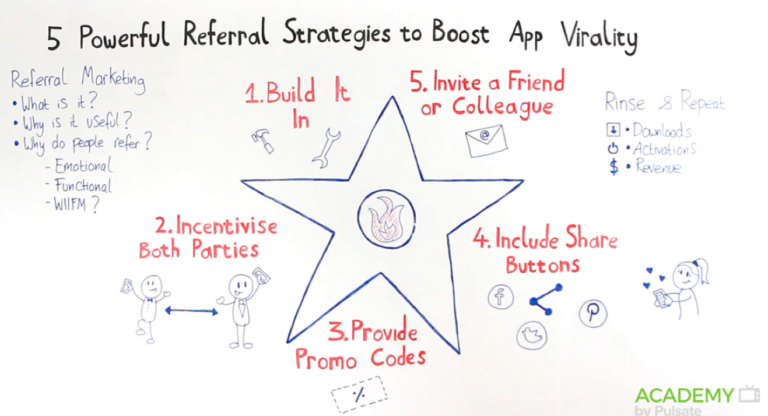
Define Core Value Of Your App
First of all, take a look at your app. Make sure that your users have something worthy for sharing. Your efforts will be in vain if your app is not that beneficial for them as you would imagine.
Target Right Users
For an efficient campaign, you need to group your users according to their evolution inside your app. You can start with the ones that enjoy using it. They are more likely to convince their friends to try your app.
High-Value Users
The ones that spend their resources inside your app can attract other people to do the same thing.
High Influencers
Some of your users are very active on social networks and this factor makes them valuable targets for your strategy. If a small part of the time they spend chatting with their friends is allocated to your app then the results will appear sooner than you think.
Engaged Users
These users show you when the right moment to display your message about referrals is. When their engagement reaches highest level you will know that you will obtain the wanted effect.
Pick A Suitable Reward
In an ideal world users will refer your app without any interventions from your side, but in the real world some incentives help a lot. Finding the right reward is the reason for knowing your users. As we mentioned before you don’t need to spend any money. Instead, you can offer them some exceptional bonuses related to your app. Let’s see what options are available for your situation.
Free Shipping
There are many customers attracted by your brand if you offer them free shipping.
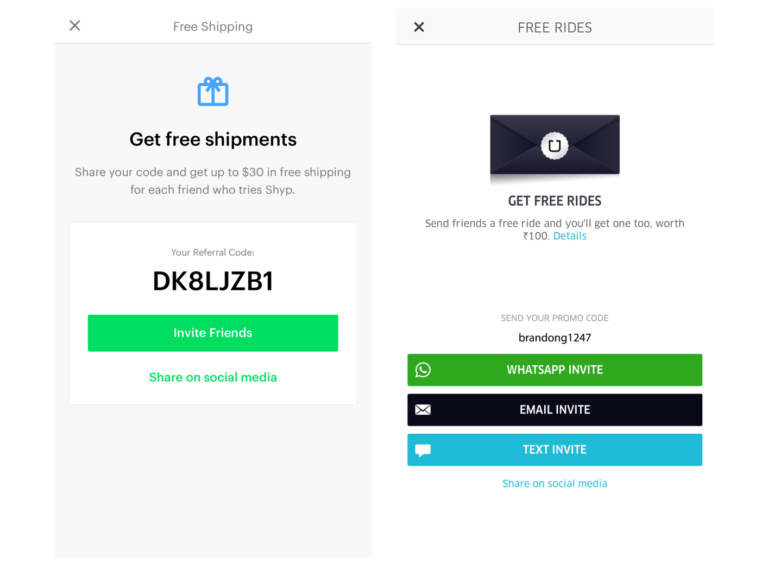
Premium Memberships
Premium recognition will make your users feel very special.
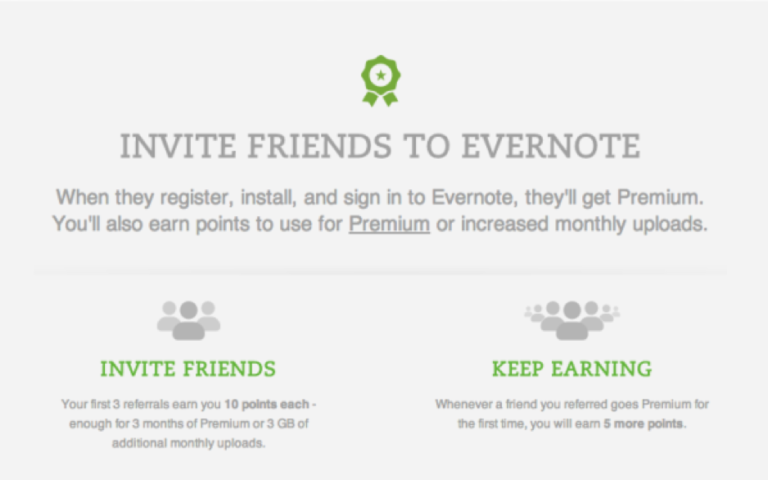
Discounts, Coupons And Gift Cards
Who will refuse discounts and offers for some items? The only condition is to match those products with their needs.
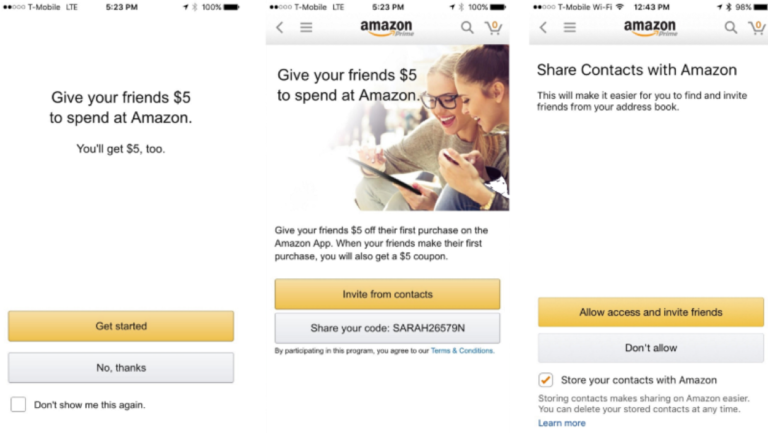
Game Coins And Gems
If you own a game it is easier to find some interesting incentives for offering to players who share your app with their friends.
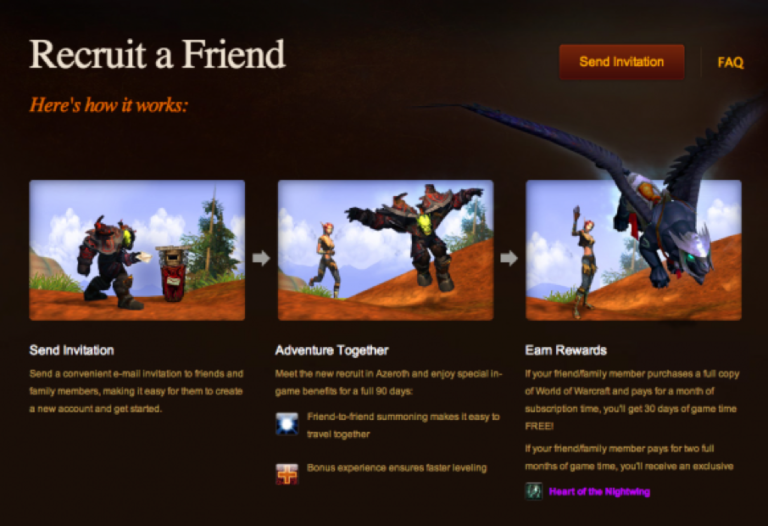
Bilateral Rewarding
It is recommended to take care of both parties involved in the activity, the advocate, and his friend. This way, both will be more motivated to access your app. Of course, the newly acquired user will do the same for getting the reward for the second time and his friends will take his example as well. This way you will create a chain reaction which in fact is what we really wanted from the beginning, isn’t it? And, of course, we made our point.
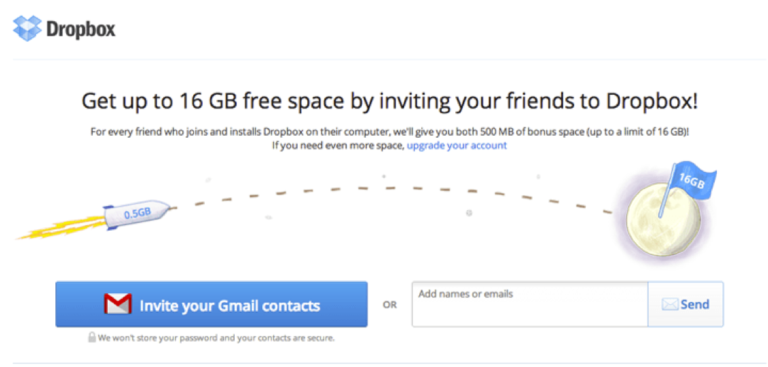
Ways To Promote In-App Referrals
If you want your users to promote your app, you need to do the same thing with your referral program. You won’t see any results if you keep everything for yourself. There are various methods for telling the world about your strategy and we will detail every one of them below.
Green Shiny Invite Button
Make your intention visible through the classic method which is a call to action button. You need to be sure that its aspect expresses an invitation for your customers to share your app with their contacts.
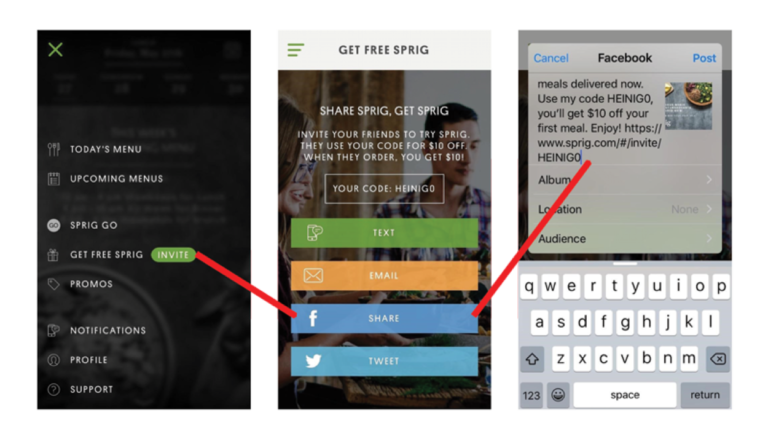
Interstitial Messages
Prompting messages which make users aware of referrals after they completed some actions will increase your chances to reach your scope. Keep in mind to make them part of the app because you don’t want to give users a strange feeling.
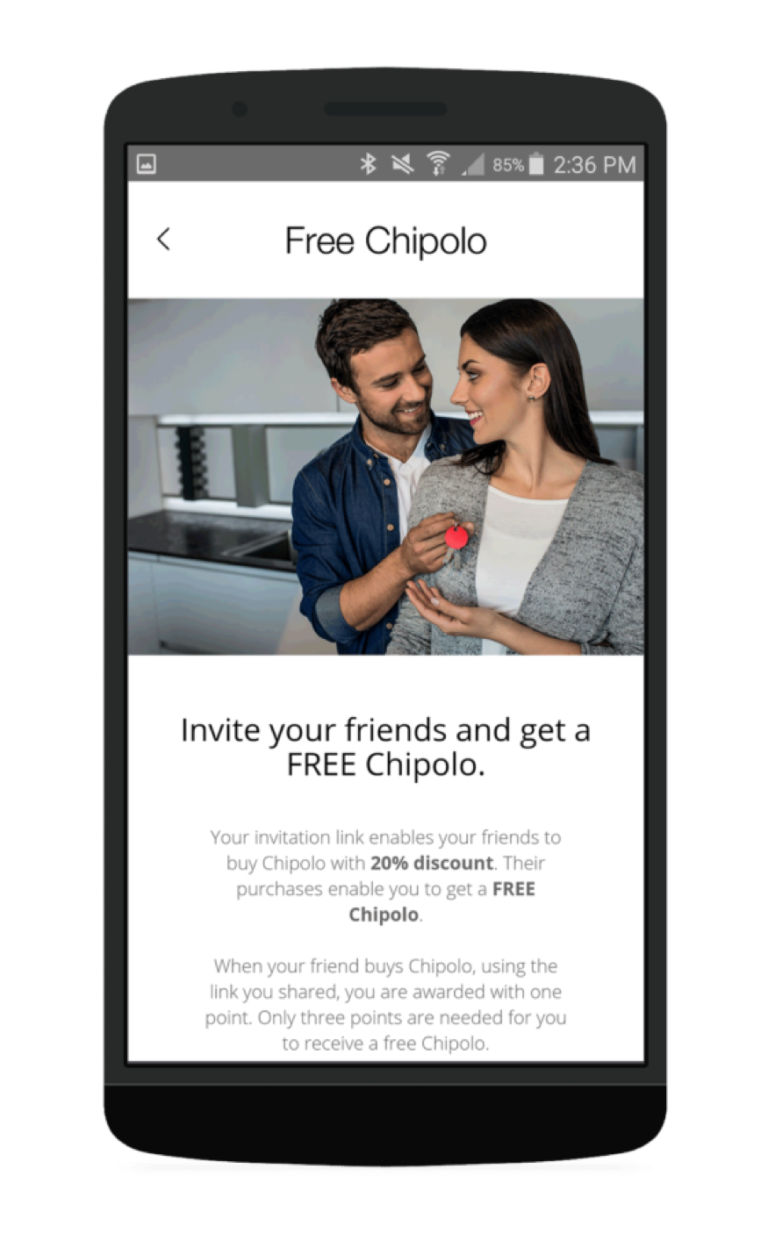
Use Push Notifications
Sending push notifications is a great solution not only to announce users about referrals but also to remember them what they will receive if they spread the word about your app.
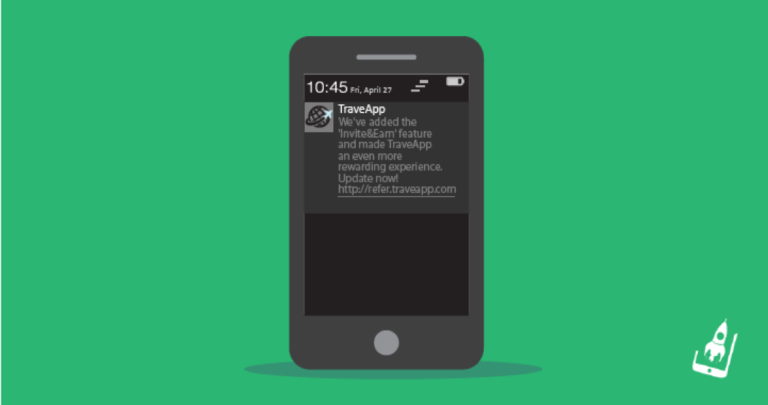
Add Social Sharing
The easiest way to convince users to share your app with all the persons they know is to show the buttons they need for this action right in front of their eyes, or better saying really close to their fingertips.
Diversify Your Rewards
It is really tricky to discover the reward that will do the job for you. You need to start with what you think your users will appreciate and to change according to the results.
Provide Personalized Referral Codes
For making the entire process a lot easier for both developers and users, you should consider implementing personalized referral codes. It gives a higher level of transparency for both sides.
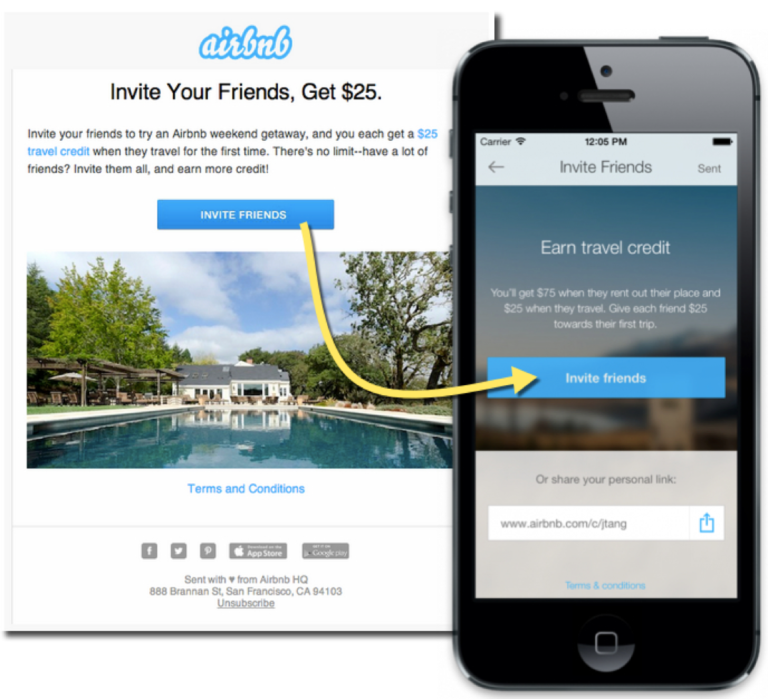
Iterate!
For being sure that you create a domino effect for your strategy you need to be active while your campaign is running.
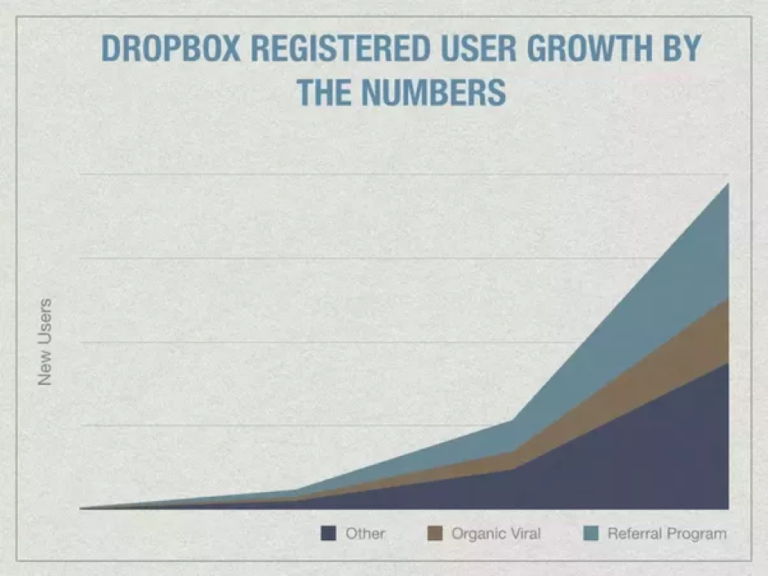
Track Proponent Users
You need to watch your ambassadors’ behavior in order to detect the best results.
Monitor Activations And Influence Rates
You don’t need to rely your actions on guessing. Keeping an eye on the evolution of your plan will allow you to make changes according to the reports you receive.
FINAL THOUGHTS
Now you know what it takes for your users to convince their friends to join them in the adventure offered by your app. And speaking about sharing, feel free to share this article with other app owners that are in desperate need of acquiring valuable users without spending too much. They will certainly show you their appreciation for your help. Not to mention that you will understand better the working principle of referrals.




